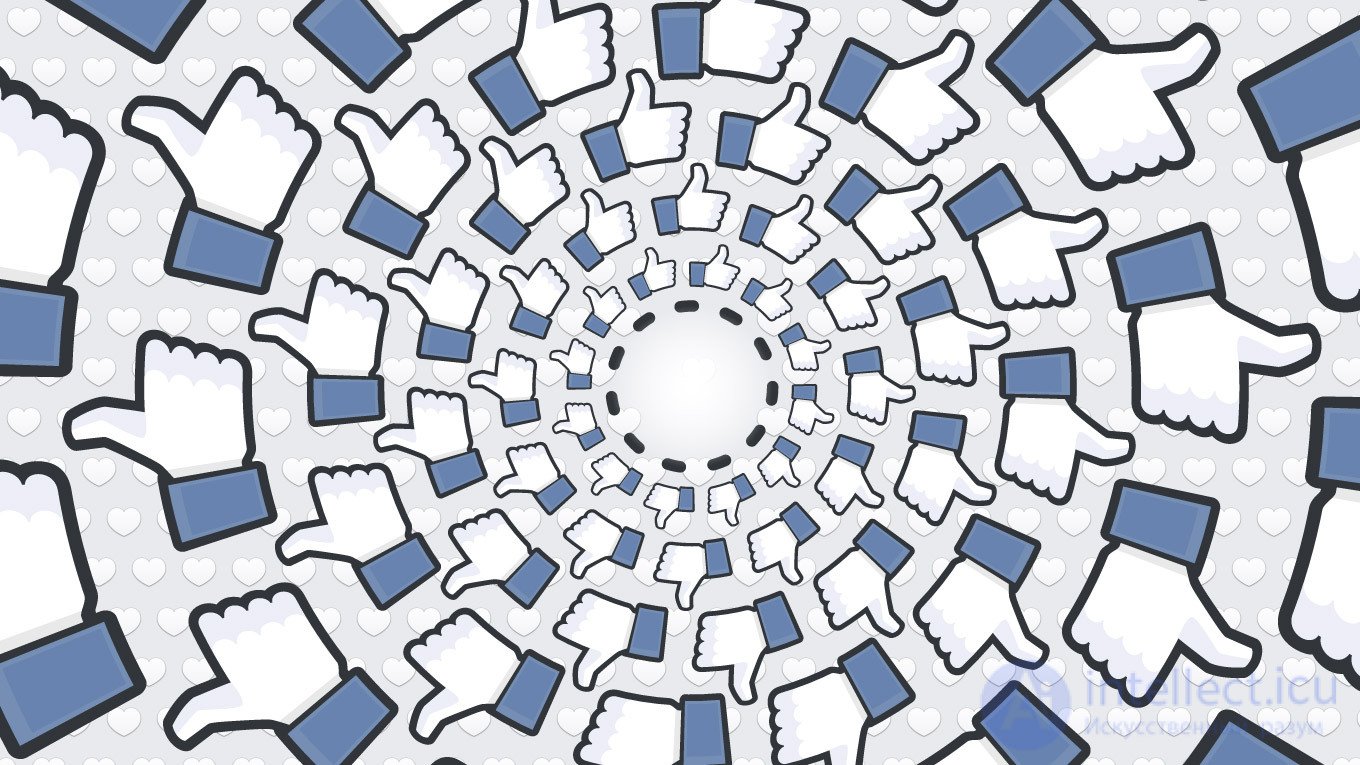Lecture
"Like" - this is the easiest way to get and express stroking on the Internet.

In psychology, there is the concept of stroking.
Stroking is an action in which a person directs his attention to a partner, and, turning to him, signals that he recognizes his presence or himself as a person. The partner is experiencing certain emotions and feelings. Stroking is not necessarily a physical touch. Stroking is a smile, and a compliment, and support, and words, and active listening, emphasizing the significance of a person.
There is an opinion that stroking is a need, the same as the need for food, water, air, heat. The lack of strokes makes people emotionally vulnerable and manipulative.
A person who lacks strokes spends a huge amount of energy to satisfy his “hunger” for stroking.
Stroking people get a variety of ways. Some become diligent and responsible employees. Others deserve stroking in fights. Still others attract attention to themselves, carefully watching their appearance. And the fourth get strokes, manipulating others.
According to the method of obtaining strokes are:
Unconditional - strokes received for the fact that the person is the way he is.
Conditional - strokes that a person receives for the fact that he does something or does not.
Social networks teach the principle that love can only be earned. It is impossible to put a “like” person on a social network, simply because it is.
To get love ("like"), approval, praise or attract attention, you must do something. Post a funny picture, write an interesting post, share the news, change the avatar, show new photos. When a user posts, it shows that he is alive, that you can love him and interact with him. With users who are on the side of the news feed, it turns out to interact a little.
The social network does not allow to put “like” to a person simply because this person is there. You can put “like” only to the action or quality of a person.
People who have harmonious relationships in the family and in their personal lives do not urgently need stroking and their activity in social networks is much less than in people who replace social gaps in their personal life with social networks. Also, the activity of such people is not aimed at seeking approval, but at receiving information and communication.
Like is a convenient way to make yourself known. Express your presence without having to correspond. Comments require an answer, time is written and written. You don't need to waste time and energy on "like".
People use likes to attract attention. Sometimes they can not speak to another person personally, but if they share his views, they often don’t mind showing it. You can put "like", thus expressing involvement in the opinion of the author of the post.
Verbal language on the Internet is replaced by sign language. With the growth of information, a new communication language was needed. People comment less and like more and more. "Like" - a concise expression of relationships. Experts notice a trend that there are less comments, but more reposts and likes.
“Like” is also a convenient way to express a compliment to a person, to draw attention to yourself and, maybe, to meet you in person later.
Mechanism:
Familiarity with strangers social network users start with a “like” - they like the post, and only then write a message or add them to a friend. First a compliment, then a conversation.
The like button is the approval button, and this verb is an obstacle for sharing some news. That is why at one time, Facebook planned to allow users to create their own verbs for the like button.
Once I wrote an acquaintance from Ukraine. He helps the orphans fund. They integrate news into social networks, and face the problem that, for example, putting “likes” on the article “Liza N. requires a blood transfusion” is at least doubtful.
They wondered what would happen if they launched the analogue “Like” - a button with the phrase “I care about it” or “It bothers me”.
1. Understand what this button will do;
2. Choose a verb to cause a dissonance between the action and the touch of a button.
In social psychology, there is a concept that if a person has made a promise to do something, he will do it more likely if he has not made a promise.
Robert Cialdini in “Psychology of Influence” wrote that a person is likely to perform an action if he made a promise, than if he did not, because people are consistent in their actions, and they want to appear so before themselves.
On the websites of Posters or Look At Me in party announcements, the "I will go" button is introduced for exactly the same reason. This is also a commitment.
In this case, you can enter the button "I will help", when clicked, which would drop a list with options for help. Then all the news that the user noted, would be collected in one place on the type to do list, where they could be viewed.
Comments
To leave a comment
SMM Social Media Promotion
Terms: SMM Social Media Promotion